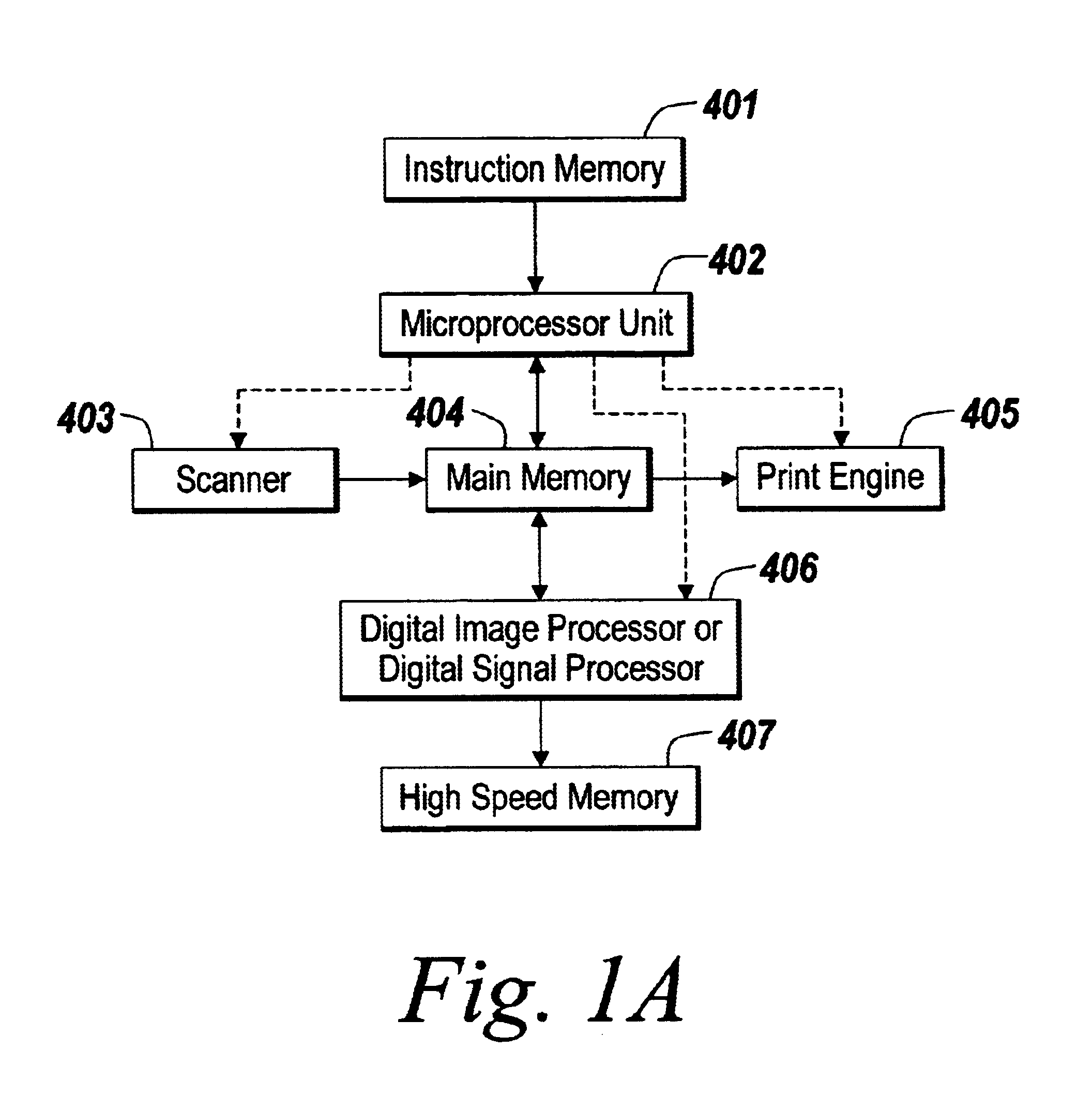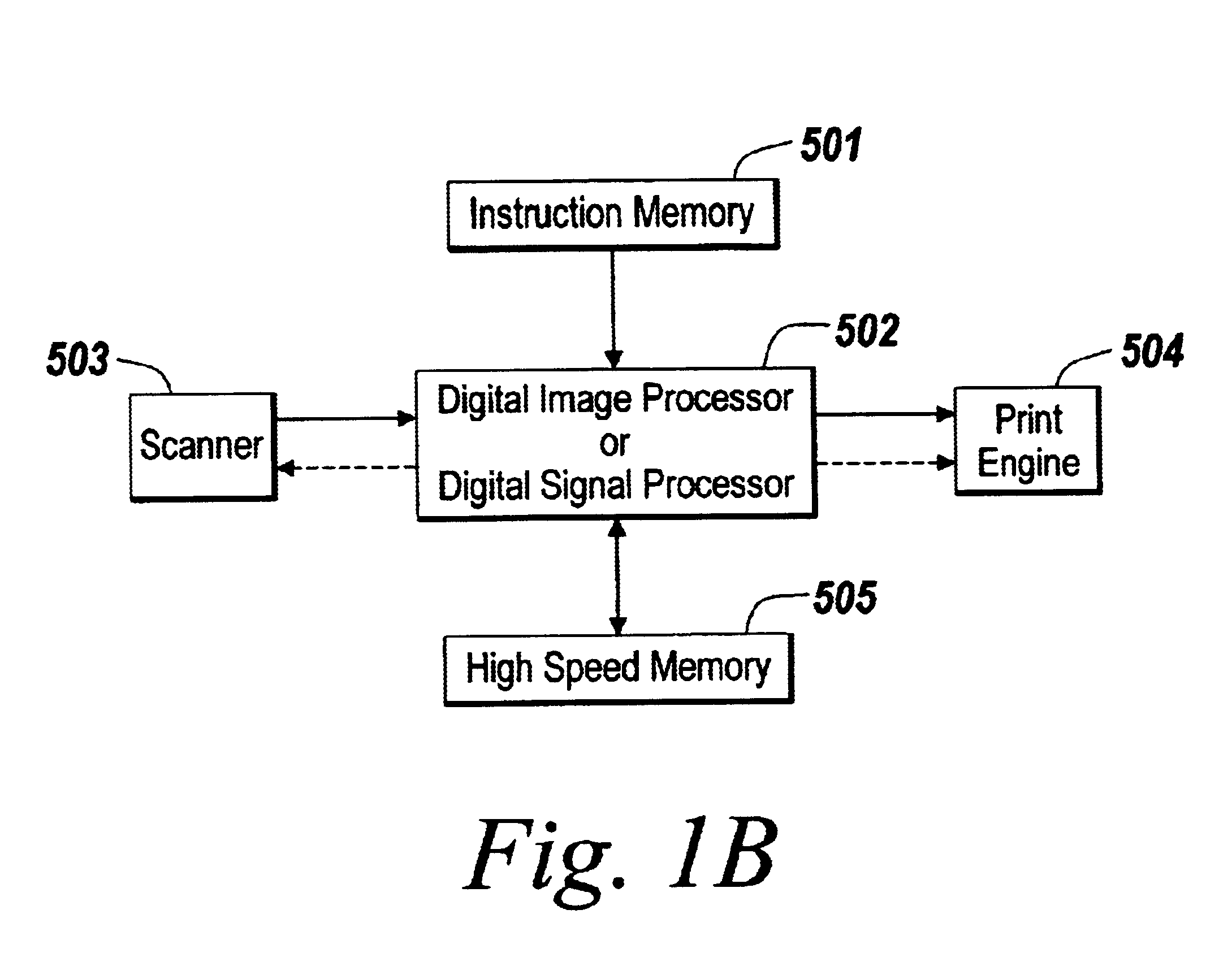System and method for color copy image processing
a color copy and image processing technology, applied in the field of image processing, can solve the problems of scan and print engine fidelity, spatial resolution and intensity modulation limitations, and the typical image artifacts produced by hardcopy pages using digital scan and print devices, and achieve the effect of reducing computation costs and less errors
- Summary
- Abstract
- Description
- Claims
- Application Information
AI Technical Summary
Benefits of technology
Problems solved by technology
Method used
Image
Examples
Embodiment Construction
The figures contained and described herein depict a preferred embodiments of the present invention for purposes of illustration only. One skilled in the art will readily recognize from the following discussion that alternative embodiments of the structures and methods illustrated herein may be employed without departing from the principles of the invention described herein.
Referring now to FIG. 1a, there is shown a system diagram showing one embodiment of a color copy image processing system, in accordance with the present invention. The solid lines show the primary paths of data flow. The dashed lines show control flow. This embodiment is preferred when the order that data comes from the scanner does not match the order that data is sent to the printer. For example, data may come from the scanner on a line by line basis in an RGB format, and this data may be sent to a laser printer in a CMYK format as individual cyan, magenta, yellow and black plane data. The data in the cyan plane...
PUM
 Login to View More
Login to View More Abstract
Description
Claims
Application Information
 Login to View More
Login to View More - R&D
- Intellectual Property
- Life Sciences
- Materials
- Tech Scout
- Unparalleled Data Quality
- Higher Quality Content
- 60% Fewer Hallucinations
Browse by: Latest US Patents, China's latest patents, Technical Efficacy Thesaurus, Application Domain, Technology Topic, Popular Technical Reports.
© 2025 PatSnap. All rights reserved.Legal|Privacy policy|Modern Slavery Act Transparency Statement|Sitemap|About US| Contact US: help@patsnap.com



